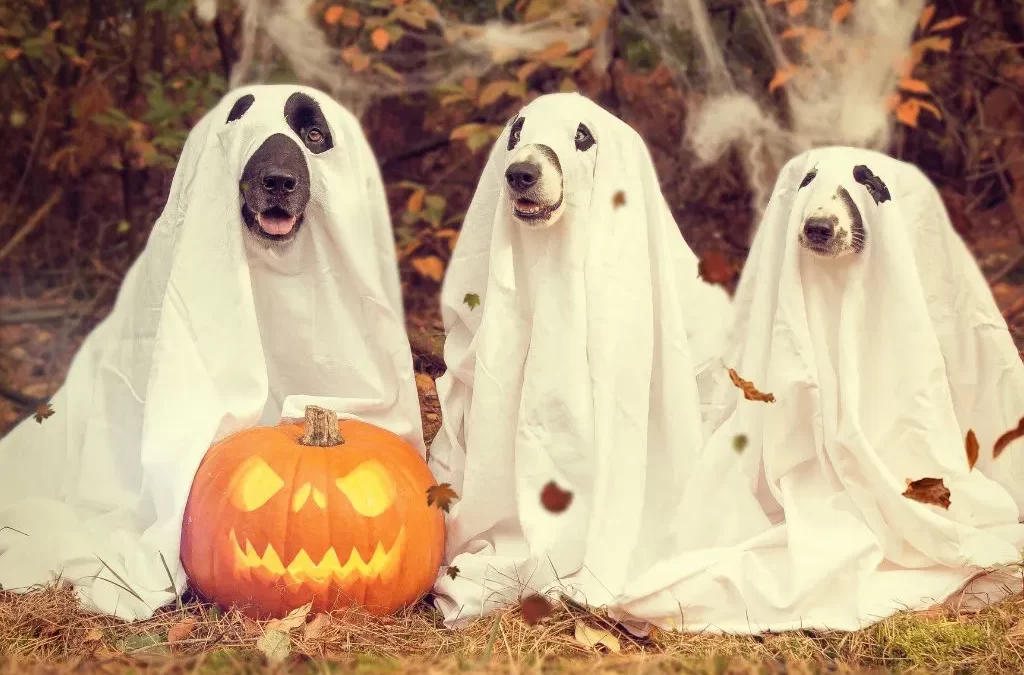Halloween Costume Considerations
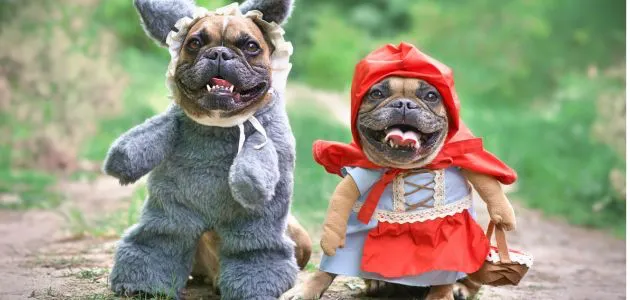
Choose Comfort Over Style
When it comes to dressing up your dog for Halloween, the top priority should always be their comfort. While you might be tempted by elaborate and stylish costumes, it’s essential to remember that your dog’s well-being comes first. Avoid costumes that could restrict your dog’s movement or breathing in any way.
Dogs have a natural range of motion, and any costume that limits their ability to walk, run, sit, or lie down comfortably can cause stress and discomfort. Signs of discomfort may include excessive panting, struggling to move, or trying to chew or paw at the costume. To ensure your dog enjoys the Halloween experience, opt for costumes made from soft, breathable materials that allow free movement.
Test the Costume
Before the big Halloween night, it’s a good idea to allow your dog to become familiar with the costume. Put the costume on them for short periods well in advance. This helps your dog get used to the sensation of wearing it and reduces the chances of them feeling stressed or anxious when they wear it on Halloween.
During these trial runs, observe your dog’s behavior closely. If they seem agitated, uncomfortable, or anxious while wearing the costume, consider a different option or make necessary adjustments. Ensure that the costume fits properly and doesn’t rub against their skin or irritate them. This gradual introduction to the costume will help your dog associate it with positive experiences rather than stress.
Avoid Masks and Dangling Accessories
While dressing your dog up for Halloween can be a lot of fun, it’s crucial to prioritize their safety and comfort. Masks and dangling accessories might look cute, but they can cause anxiety and discomfort for your pet. Masks can restrict your dog’s vision and make them feel vulnerable, leading to stress and anxiety.
Dangling accessories such as capes, hats, or long tails can also pose tripping hazards for your dog and may cause them to become entangled or frustrated. To ensure your dog’s comfort and safety, opt for simple, safe costumes that don’t obstruct their vision, hearing, or breathing. Choose costumes that are designed specifically for dogs and are free from any components that could cause harm or stress to your furry friend.
Safe Trick-or-Treating with Your Dog
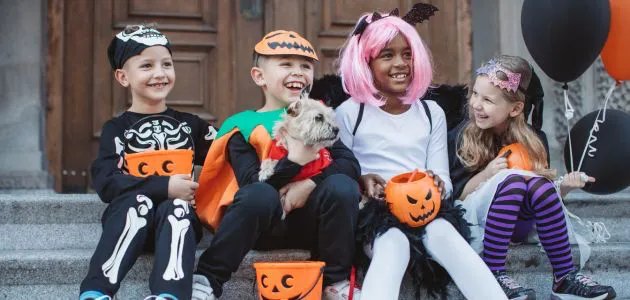
Keep Dogs on a Leash
When you decide to bring your dog along for trick-or-treating, it’s crucial to keep them on a leash at all times. Even the most well-behaved dogs can become overwhelmed or spooked by the unusual sights and sounds of Halloween. Keeping your dog on a leash ensures their safety and prevents them from darting off into traffic, chasing after other people or animals in costumes, or getting lost in the commotion.
Additionally, a leash allows you to maintain control over your dog’s interactions with strangers, especially children who may want to approach your dog for a pat or a treat. Choose a sturdy leash that’s appropriate for your dog’s size and strength, and make sure it’s securely attached to a comfortable harness. This way, you can enjoy the festivities with your dog while keeping them safe and secure.
Carry Pet Identification
No matter how cautious you are, there’s always a slight chance that your dog could become separated from you during the Halloween outing. To prepare for this possibility, ensure that your dog is wearing proper identification. This includes a collar with an ID tag that includes your contact information, such as your phone number and address.
Additionally, consider having your dog microchipped by a veterinarian. Microchipping is a more permanent form of identification that can be scanned by animal shelters or veterinarians if your dog gets lost. Having both a visible ID tag and a microchip increases the chances of a safe reunion with your beloved pet in case they become separated from you in the Halloween crowd.
Keep an Eye on the Candy
Halloween is synonymous with candy, but it’s essential to be vigilant about keeping your dog away from any dropped or discarded sweets. Chocolate, in particular, is highly toxic to dogs and can lead to severe health issues, including vomiting, diarrhea, rapid breathing, and even seizures or death if ingested in significant quantities.
To ensure your dog’s safety, be watchful of any candy on the ground or that your dog may attempt to eat. Keep your dog on a short leash to prevent them from scavenging for treats, and remind well-meaning strangers not to offer candy to your pet. Instead, bring along some dog-friendly treats to reward your dog during the outing.
Home Decorations and Dog Safety
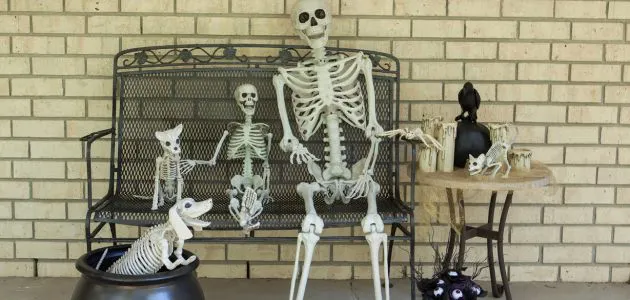
Halloween decorations can add a spooky atmosphere to your home, but they can also pose risks to your curious canine companion. When decorating your home, be mindful of items that could be hazardous to your dog. This includes decorations such as candles, wires, and small props.
Candles
Open flames from candles can be particularly dangerous. Dogs, especially those with wagging tails or playful tendencies, might accidentally knock over a lit candle, leading to burns or fires. To prevent this, consider using battery-operated LED candles that provide a flickering effect without the fire hazard.
Wires
Wires for lighting and electronic decorations should be safely tucked away and out of your dog’s reach. Dogs may chew on wires out of curiosity, risking electric shocks or damage to the decorations.
Small Props
Small Halloween props, such as plastic spiders or fake cobwebs, can be tempting for dogs to play with or chew on. Ingesting these items can lead to digestive problems or choking hazards. Keep these decorations elevated or in secure areas where your dog cannot access them.
Regularly inspect your home for any potential hazards and make necessary adjustments to ensure that your Halloween decorations do not pose a danger to your furry friend. By securing these items, you can enjoy the festive spirit of Halloween without compromising your dog’s safety.
Candy and Treats Precautions
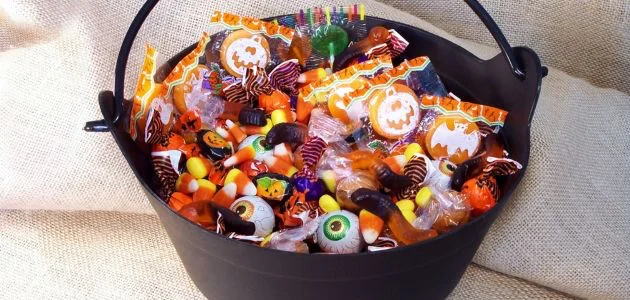
Keep Candy Out of Reach
It’s Halloween, of course we have to have candy, but it’s crucial to ensure that your dog doesn’t have access to these sweet temptations. Candy and treats meant for humans can be dangerous for dogs, especially chocolate, which is toxic to them. Additionally, candy wrappers and foil can pose health risks if ingested.
- Chocolate: The theobromine and caffeine in chocolate can lead to symptoms ranging from mild digestive upset to severe toxicity, including seizures, rapid breathing, and even death. Dark chocolate and unsweetened baking chocolate contain higher levels of these substances and are particularly hazardous. Ensure that all chocolate products are securely stored in a place your dog cannot reach, even if they’re wrapped.
- Candy Wrappers: Dogs might be tempted to chew on candy wrappers due to lingering scents of candy or food. Ingesting wrappers can cause gastrointestinal blockages or irritation, leading to vomiting and discomfort. Dispose of wrappers in a trash can with a secure lid, away from your dog’s reach.
Offer Dog-Friendly Treats
While it’s best to keep human treats away from your dog, you can still include your furry friend in the Halloween festivities by preparing special dog-friendly treats. These treats are not only safe for your dog but can also make them feel included and loved during this exciting time.
- Homemade Dog Treats: Create homemade dog treats using dog-safe ingredients such as plain cooked chicken, sweet potatoes, or pumpkin. There are many easy-to-follow recipes available online for healthy, canine-approved snacks.
- Commercial Dog Treats: Invest in high-quality, commercially available dog treats that are specifically designed for dogs. Look for treats that are appropriate for your dog’s size and dietary needs.
- Interactive Treat Toys: Consider using interactive treat toys that dispense small portions of dog-friendly treats when your dog interacts with them. This not only provides mental stimulation but also satisfies their need to explore and play.
Managing Dog Anxiety
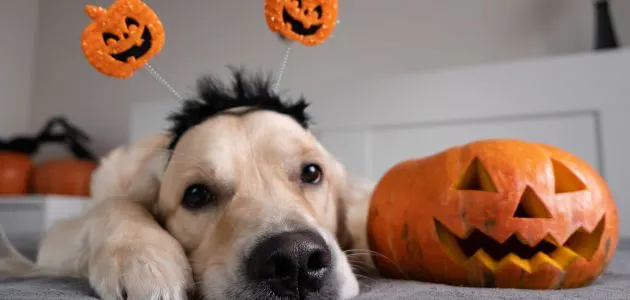
Create a Safe Space
Halloween can be an overwhelming time for many dogs due to the unusual sights, sounds, and activities. If your dog becomes anxious or stressed during Halloween activities, it’s essential to provide them with a designated safe space where they can retreat and find comfort.
- Select a Quiet Area: Choose a quiet and secluded area in your home where your dog can feel secure. This space should be away from the hustle and bustle of Halloween festivities, including the doorbell ringing or loud music.
- Comfort Items: Place your dog’s favorite toys, blankets, and bedding in this safe space to provide them with a sense of familiarity and comfort. Familiar scents can help reduce anxiety.
- Provide Water: Ensure your dog has access to fresh water in their safe space, as anxiety may cause increased thirst.
- Use a Crate: If your dog is crate-trained and feels safe in their crate, you can use it as their safe space. Cover the crate with a blanket to create a cozy den-like environment.
Use Positive Reinforcement
Positive reinforcement is a valuable tool in helping your dog associate Halloween with positive experiences and reducing anxiety. By rewarding calm behavior, you can help your dog feel more at ease during this potentially stressful time.
- Calm Behavior Rewards: Whenever your dog displays calm behavior, such as remaining relaxed during loud noises or not reacting anxiously to visitors in costumes, offer them treats, praise, and affection. This positive reinforcement reinforces their calm demeanor.
- Desensitization: In the weeks leading up to Halloween, gradually expose your dog to Halloween-related stimuli, such as costumes or decorations. Reward them for remaining calm during these exposures. This gradual desensitization can help them become more accustomed to the sights and sounds of Halloween.
- Training: If your dog struggles with anxiety, consider enrolling them in basic obedience training or consulting a professional dog trainer or behaviorist. Training can help build their confidence and improve their ability to cope with anxiety-inducing situations.

